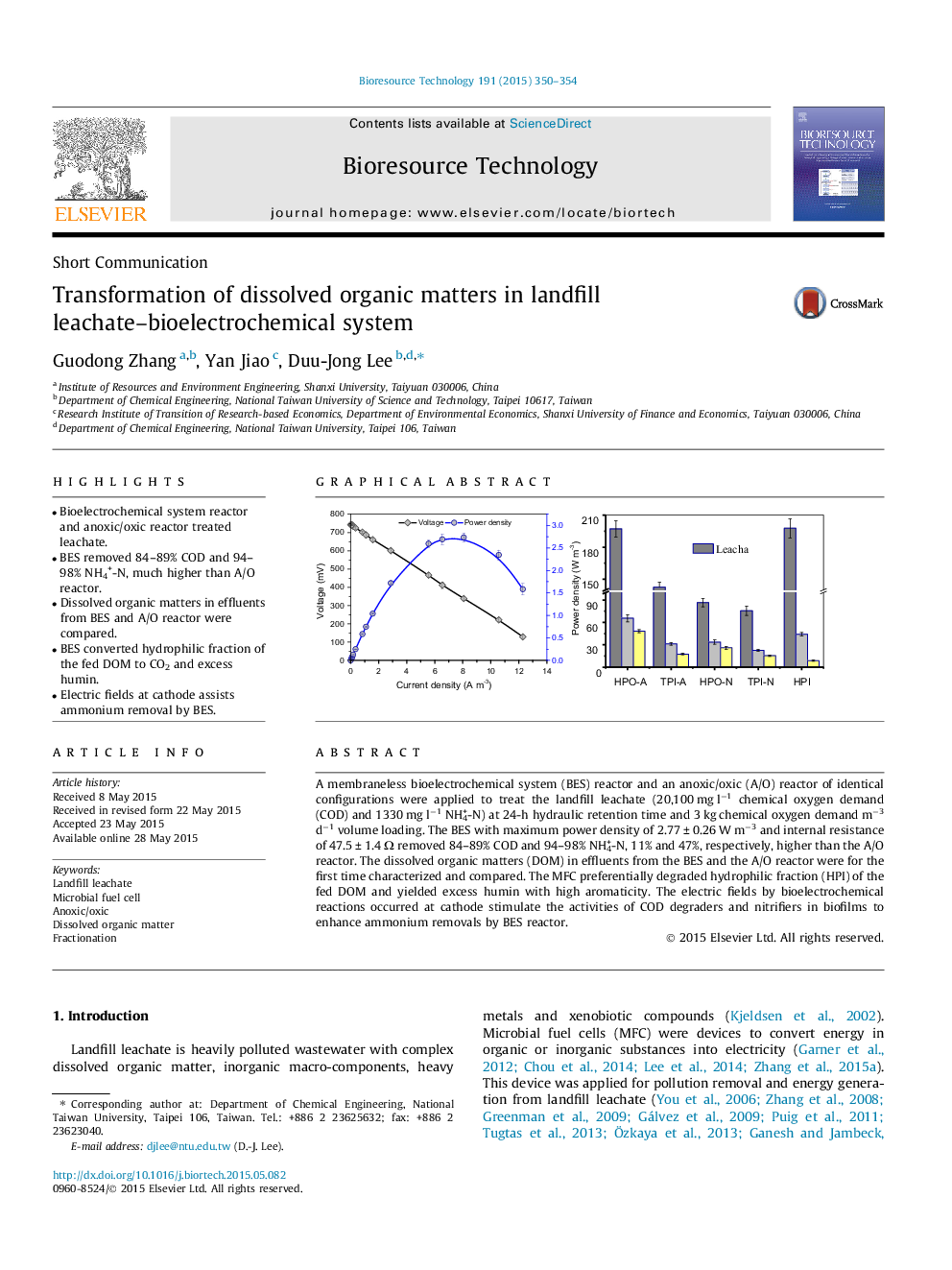| Article ID | Journal | Published Year | Pages | File Type |
|---|---|---|---|---|
| 679611 | Bioresource Technology | 2015 | 5 Pages |
•Bioelectrochemical system reactor and anoxic/oxic reactor treated leachate.•BES removed 84–89% COD and 94–98% NH4+-N, much higher than A/O reactor.•Dissolved organic matters in effluents from BES and A/O reactor were compared.•BES converted hydrophilic fraction of the fed DOM to CO2 and excess humin.•Electric fields at cathode assists ammonium removal by BES.
A membraneless bioelectrochemical system (BES) reactor and an anoxic/oxic (A/O) reactor of identical configurations were applied to treat the landfill leachate (20,100 mg l−1 chemical oxygen demand (COD) and 1330 mg l−1 NH4+-N) at 24-h hydraulic retention time and 3 kg chemical oxygen demand m−3 d−1 volume loading. The BES with maximum power density of 2.77 ± 0.26 W m−3 and internal resistance of 47.5 ± 1.4 Ω removed 84–89% COD and 94–98% NH4+-N, 11% and 47%, respectively, higher than the A/O reactor. The dissolved organic matters (DOM) in effluents from the BES and the A/O reactor were for the first time characterized and compared. The MFC preferentially degraded hydrophilic fraction (HPI) of the fed DOM and yielded excess humin with high aromaticity. The electric fields by bioelectrochemical reactions occurred at cathode stimulate the activities of COD degraders and nitrifiers in biofilms to enhance ammonium removals by BES reactor.
Graphical abstractFigure optionsDownload full-size imageDownload as PowerPoint slide
